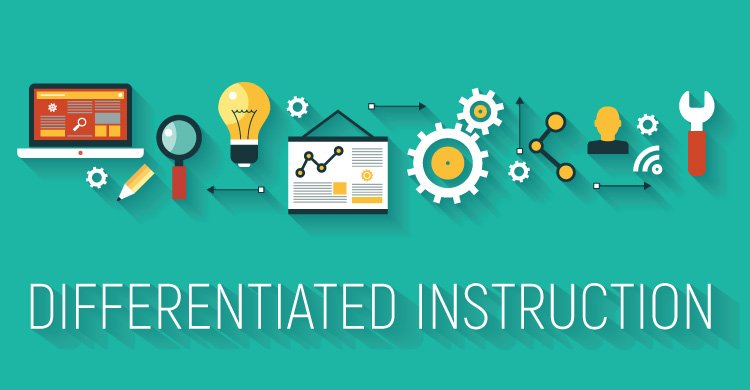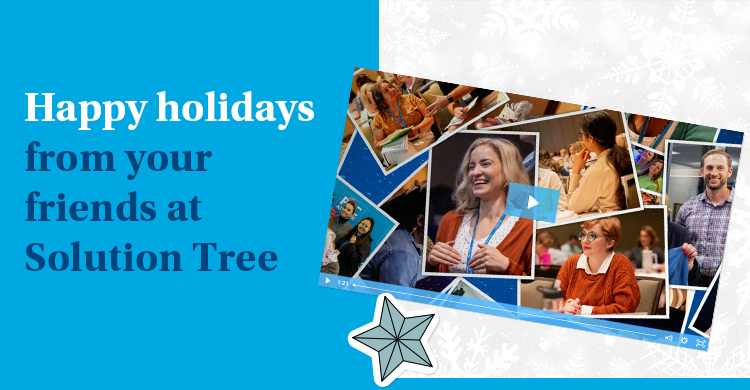Differentiation is neither revolutionary nor something extra. It is simply teaching mindfully and with the intent to support the success of each human being for whom we accept professional responsibility.
—David A. Sousa and Carol Ann Tomlinson (Differentiation and the Brain, 2018, p. 10)
Successful educators have been differentiating instruction for centuries. Great teachers design learning experiences that respond to their students’ needs/readiness, interests, and learning preferences. They are ready to add depth and complexity to a task when they see that some students have achieved early mastery and are ready for a greater challenge. They also have ideas ready for how to scaffold the lesson to provide a struggling student with sufficient support tailored to the student’s needs. These differentiated strategies are part of the art and science of great teaching.
Levels of Differentiation
The two levels of differentiated instruction could be defined as daily and targeted.
Daily Differentiation
Daily differentiated instruction integrates variety into daily tasks, lessons, and experiences for all students within a safe and secure brain-friendly classroom environment. This might include various cooperative learning arrangements, multimodal strategies, games and mini-competitions, art, music, role-play, projects, and discovery play.
Targeted Differentiation
Targeted differentiated instruction is the more traditional understanding of differentiated instruction. Using assessment data and student feedback, teachers may modify and adapt instruction, materials, setting, content, process, and products to meet the learning needs of individual students’ readiness—before, during, or after an initial lesson. This might include small-group reteaching, adjusted/modified assignments, extensions, do-overs, or a compacted lesson for highly capable students.
Brain-Friendly Daily Differentiation
When teachers have a solid understanding of the latest neuroscience research on learning, attention, motivation, memory, emotions, and stress, they are able to design classroom environments, curricula, and instructional strategies with the brain in mind. This proactive approach using evidence-based best practices sets the stage for student engagement that results in powerful learning. Using a variety of differentiated strategies may be ineffective if the classroom climate and environment are not “brain-friendly.” Understanding how brains learn best and most naturally can help teachers create “brain-compatible” classrooms that can optimize learning.
Why Teachers Need to Differentiate Instruction
Differentiation should not be seen as more work. It is implementing the best of what we know to help all students learn. There are five compelling reasons to answer the question, “Why should teachers differentiate?”
-
Unique Brains
Neuroplasticity, according to neurologist and educator Judy Willis, is defined as the selective organizing of connections between neurons in our brains. Intelligence is not fixed in our brains from birth. Rather, it’s forming and developing throughout our entire lives. Every experience and interaction prompts neurons to grow dendrites, connect and form our neural networks. Every brain becomes uniquely wired.
One type of lesson may or may not make sense to every learner in a classroom. One’s prior experiences, opportunities for socialization, and family life have created brain connections that must be considered and respected during the learning process. As our children are experiencing more indoor, solitary, and sedentary time (often in front of a screen), many researchers believe that without discovery play and socialization, our kids may be lacking opportunities to make important neural connections in their younger years. These 21st century students’ brains are wired differently. One size does not fit all. Instructional variety must be broad to engage the diverse learners in a classroom.
-
Brain Preferences
Each of us develops learning “preferences.” Based on our prior experiences, interactions, and successes (or failures), our brains develop patterns for what we believe works best for us. Even students from the same family can have very different interests, preferences, and temperaments, in spite of their shared genetic and environmental influences. Therefore, all students enter the classroom with their own unique propensities for learning—abilities, mindsets, advantages, disadvantages, and expectations—all of which shape students’ learning preferences and needs. Teachers who take the time to create student profiles may discover the unique learning preferences and multiple intelligences strengths students bring to the classroom. When students are routinely motivated by tasks that “fit” them, they can develop a lifelong love of learning. Through daily differentiation, teachers can create instructional plans in a way that boosts every student’s ability to succeed.
-
Curious Brains
The brain loves novelty. Motivation and engagement are enhanced when we are presented with something out of the ordinary. Our brains are constantly scanning our environments for resources and pleasure. Affective neurologist Jaak Panksepp calls this the brain’s natural innate SEEKING system (Gregory & Kaufeldt, 2015).
Find out what your students’ interests are. What will get their attention? Student learning can be enhanced by real-world situations, problem/project-based tasks, discovery play, guest speakers, field trips, and sensory-rich learning environments. Many students may not engage with material presented through traditional text or lectures. When sitting in a classroom that contains mostly predictable or repeated stimuli, students’ brains lose interest and begin to seek novelty. Many of these technology-savvy learners will be more motivated and likely to engage if there are opportunities to use technology and multimedia.
In his book How the Brain Learns, 3rd Ed. (2006), David Sousa emphasized how using humor and some fun activities can create a positive classroom climate, get students’ attention, relieve stress, and enhance retention. Daily differentiation should include opportunities for students to make discoveries and figure things out on their own. Variety, a little fun, and novelty promote student learning and engagement.
-
Use It or Lose It
Brains need multiple (elaborative) rehearsals to store information into long-term memory. The human brain continues to grow dendritic connections between and among neurons throughout life, based on experiences and new learning. Those connections that get restimulated multiple times form our long-term memories. Many initial connections may only be temporary. If the new learning connections are not actively processed several times, there is a natural pruning that occurs. Only those neural connections that have had multiple rehearsals and stimulation will hold for the long term. (Sousa, 2006).
For every concept, skill, standard, and task, teachers must consider how it might be presented and then actively processed in several different ways. This pluralized teaching should incorporate a broad spectrum of multimodal instructional strategies. Pedagogies that encompass a variety of best practices can provide pluralized strategies that can engage all learners. Marzano’s Classroom Instruction That Works and Hattie and Yates’ Visible Learning and the Science of How We Learn provide a plethora of strategies that are based on a meta-analysis of available research.
When teachers create a repertoire of powerful strategies and integrate them into daily differentiation, students will retain, transfer, and be able to use the new knowledge and skills beyond the classroom. Without the multiple rehearsals, learning might be only for the short term.
-
The Best Intervention Is Prevention
Daily differentiation of essential standards helps more students be successful during initial instruction of the core curriculum. When more students are able to achieve mastery due to pluralized teaching, there will be less of a need to create interventions. For schools that develop response to intervention (RTI) models—or more broadly a multitiered system of support (MTSS)—they can systematically provide differing levels of intensity of supports (interventions/additional challenges, collaborative structures, monitoring of student progress) based upon student responsiveness to instruction and intervention (Buffum, Mattos, Weber, 2012). These tiers of intervention are most successful if the grade-level core instruction at Tier 1 has been taught with effective evidence-based best practices and differentiated instructional strategies. “Shoring up the Core” and improving initial instruction at Tier 1 will improve any intervention model. My co-author, Gayle Gregory, and I have two books that address the need to differentiate during Tier 1 initial instruction. The elementary and secondary editions of Best Practices at Tier 1: Daily Differentiation for Effective Instruction (Solution Tree, 2016) provide teachers with strategies so that all students receive effective instruction on grade-level essential curriculum.
There are many compelling reasons for teachers to differentiate instruction. Our classrooms are filled with diverse learners and their unique brains. A traditional “one size fits all” approach will not likely be effective for many of the students. Initial instruction should include variety and pluralized strategies. With novelty and multimodal real-world tasks, more students will be engaged. When the lessons “fit” with the students’ learning preferences, they build confidence and are more likely to stick with it, even during a struggle.
We know that effective instruction requires an expectation that all teachers use proven best practices while simultaneously integrating their own personal style, planning for daily differentiation, and preparing targeted differentiation for individual student needs. There is really no way for every teacher to have the time, all of the skills, and all of the knowledge to meet every student’s individual needs. The research is clear: good teaching requires a collaborative effort. The only way a school staff can achieve the mission of enabling the highest level of learning for all students is by collaborating using their combined skills. (DuFour, DuFour, Eaker, & Many, 2010). The Professional Learning Communities at Work® process uses team structures and a focus on learning, collaboration, and results to drive successful outcomes.
“If improved student learning requires a collective effort, then collaborative teacher teams are the engines that drive effective core instruction. …to be effective, educators in teaching teams must work collaboratively to achieve the common goal of shared essential student learning outcomes.” (Gregory, Kaufeldt, Mattos, 2016, p. 19)
Our students need us to differentiate our instructional strategies and teach with their brains in mind. Building up our teaching “tackle box” takes time. Working with colleagues, sharing ideas and successes, and interpreting student data will provide the support needed for teachers to build a repertoire of differentiated strategies.[author_bio id=”271″]
References:
Buffum, A., Mattos, M., & Weber, C. (2012). Simplifying response to intervention: Four essential guiding principles. Bloomington, IN: Solution Tree Press.
DuFour, R., DuFour, R., & Eaker, R. and Many, T. (2010). Learning by Doing: A handbook for Professional Learning Communities at Work. Bloomington, IN: Solution Tree Press.
Gregory, G & Kaufeldt, M. (2015). The Motivated Brain: Improving Student Attention, Engagement, and Perseverance. Alexandria, VA: Association for Supervision & Curriculum Development (ASCD)
Gregory, G & Kaufeldt, M. (2012) Think BIG, start small: How to differentiate instruction in a brain-friendly classroom. Bloomington, IN: Solution Tree.
Gregory, G., Kaufeldt, M., Mattos, M. (2016) Best practices at tier one: Daily differentiation for effective instruction. (Elementary & secondary versions) Bloomington, IN: Solution Tree.
Hattie, J. & Yates G., (2013) Visible learning and the science of how we learn, 1st edition. New York, NY: Routledge.
Kaufeldt, M. (2015). The motivated brain: Improving attention, engagement, and perseverance. Alexandria, VA: ASCD.
Marzano, R.J. (2017). The new art and science of teaching. Bloomington, IN: Solution Tree and ASCD.
Marzano, R. J., Pickering, D. J., & Pollock, J. E. (2001). Classroom instruction that works: Research-based strategies for increasing student achievement. Alexandria, VA: ASCD.
Sousa, D. (2006). How the brain learns. Thousand Oaks, CA: Corwin Press.
Sousa, D., & Tomlinson, C. A. (2011). Differentiation and the brain: How neuroscience supports the learner-friendly classroom. Bloomington, IN: Solution Tree Press.
Willis, J. (2006). Research-based strategies to ignite student learning, Alexandria, VA: ASCD.






